Stony-faced beauty
One major reason for our detour to the Dunedin area was the boulders at Moeraki. From the first time a tour guide mentioned them, my imagination was captured. Some distant memory from a travel show played visions of amazingly spherical boulders 4 and 5 feet in diameter.
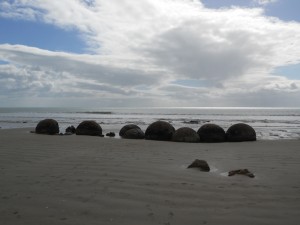
The boulders, which sit on a stretch of beach on New Zealand’s South Island, are made of mud and calcite, washed out of the shoreline where they’ve lain for millennia.
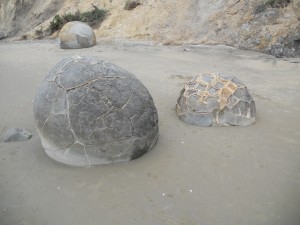
They’re the kind of thing that sounds cool in the abstract, but in person elicits a response along the lines of, “Woah!â€
The boulders have a presence. They’ve been on that beach for a long time. In fact, they formed in the seabed when that part of New Zealand was underwater. They’re old, and they give off a feeling of pure determination. As the tides erode the shoreline, freeing them from the earth, the move, slowly, out to sea.
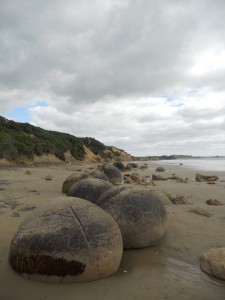
Each boulder takes its own course. Some remain buried, their tops barely visible.
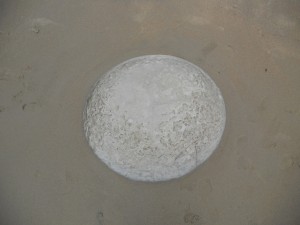
Others crumble on the edge of the water, turning slowly into sand.
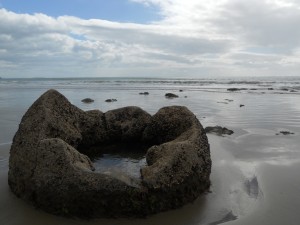
And some complete the journey, visible only when the tide retreats, like great whales catching breath before a deep plunge. Or Navy Seals on the verge of an incursion.
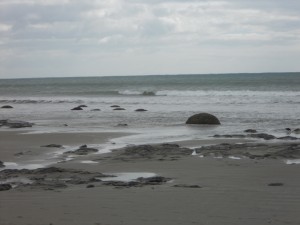
But the majority of the boulders lie in the middle of the beach, in groups, forming interesting shapes, waiting to be pulled forward by the ceaseless water.
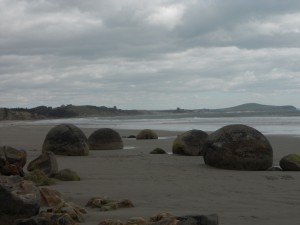
The two of us wandered along the sand, touching the stones, climbing among them, marveling at their round skins and beautiful positions.
On this lonely stretch of beach they play out their existence. And if you look closely, you can see that even these boulders in their stony determination, seem to take comfort from the closeness of each other.
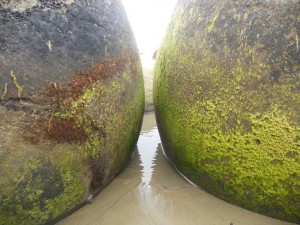



1 comment
I’ve got goosebumps.